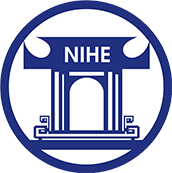THÔNG TIN VỀ CÁC KẾT LUẬN MỚI CỦA LUẬN ÁN NCS NGUYỄN THỊ HUYỀN LINH
THÔNG TIN VỀ CÁC KẾT LUẬN MỚI CỦA LUẬN ÁN
Đề tài luận án: Thực trạng hiến nhận tinh trùng, noãn trong điều trị vô sinh và kết quả thử nghiệm phần mềm quản lý thông tin tại các cơ sở hỗ trợ sinh sản
Chuyên ngành: Y tế công cộng Mã số: 62 72 03 01
Họ và tên nghiên cứu sinh: NGUYỄN THỊ HUYỀN LINH Khóa đào tạo: 36 - 2016
Họ và tên người hướng dẫn khoa học: 1. PGS.TS. Lê Hoài Chương
2. TS.BS. Nguyễn Thị Phương Liên
Cơ sở đào tạo: Viện Vệ sinh dịch tễ Trung ương
Tóm tắt những kết luận mới của luận án:
1. Thực trạng hiến nhận tinh trùng, noãn tại các cơ sở hỗ trợ sinh sản năm 2018: Số lượng tinh trùng và noãn trong ngân hàng hiến tặng khan hiếm. Tỷ lệ điều trị thành công của xin noãn; xin tinh trùng là 41,8% - 38,6%.Tuổi trung bình hiến tinh trùng cao hơn hiến noãn không đáng kể (30,3±6,27 so 28,4±4,8 tuổi). Tuổi trung bình của nhóm nhận tinh trùng thấp hơn gần 10 tuổi so với nhóm nhận noãn. Đa số nhóm hiến noãn đã lập gia đình (77,8%) và đã có con (93,1%). trong khi đó, nhóm hiến tinh trùng 40,4% đã lập gia đình và 47,0% đã có con; Hầu hết người hiến nhận tinh trùng noãn là lần đầu. 100% làm đủ xét nghiệm về lây truyền qua đường tình dục và các bệnh lây nhóm A, B; nhưng không có trường hợp nào được khám, xét nghiệm khẳng định các bệnh về gen và bệnh thần kinh..
2. Thực trạng quản lý thông tin hiến nhận tinh trùng, noãn tại các cơ sở hỗ trợ sinh sản năm 2018 cho thấy, chưa có quy trình quản lý việc hiến, nhận tinh trùng, noãn mang tính hệ thống. Quy trình quản lý chưa đáp ứng Nghị định 10/2015/NĐ-CP, chưa có cơ sở dữ liệu chung, 100% thông tin hiến, nhận tinh trùng, noãn không được mã hóa, nhập vào cơ sở dữ liệu chung. Sàng lọc người hiến, nhận tinh trùng, noãn thông qua định danh người bệnh bằng chứng minh thư, chỉ có 4 bệnh viện sử dụng vân tay và chụp ảnh nhận diện khuôn mặt. Phần mềm chỉ quản lý tại cơ sở HTSS của bệnh viện, không chia sẻ thông tin và một số phần mềm như SPSS, ACCESSchưa đáp ứng được yêu cầu quản lý hiến nhận tinh trùng, noãn. 4/17 bệnh viện cóphần mềm quản lý tổng thể hồ sơ hiến, nhận tinh trùng, noãn. Đánh giá về quy trình và phương thức quản lý: 82,6% CBYT cho rằng chưa đáp ứng được nhu cầu quản lý.
3. Kết quả ứng dụng công nghệ thông tin trong quản lý hiến nhận tinh trùng, noãn tại các cơ sở hỗ trợ sinh sản năm 2018 cho thấy: Phần mềm quản lý hiến, nhận tinh trùng và hiến, nhận noãn đáp ứng được nhu cầu quản lý để phù hợp với hướng dẫn tại Nghị định 10/2015NĐ-CP. 100% CBYT và khách hàng mong muốn mở rộng việc áp dụng phần mềm quản lý hiến, nhận tinh trùng tại tất cả các TTHTSS nhưng cần có cơ chế, quy định cụ thể trong việc chia sẻ, quản lý thông tin dữ liệu.Đánh giá của CBYT về thời gian tiếp nhận và kết quả lâm sàng; về khả năng kết nối, chia sẻ, quản lý quy trình, thống kê, sao lưu; về giao diện ổn định, phân quyền trong quản lý, bảo mật; về khả năng linh hoạt, phát triển trước và sau can thiệp đều có sự khác biệt có ý nghĩa thống kê với p<0,05.
……………, ngày…..tháng…..năm 20…..
Đại diện người hướng dẫn PGS.TS Lê Hoài Chương | Nghiên cứu sinh Nguyễn Thị Huyền Linh |
INFORMATION ABOUT NEW FINDINGS OF THE PHD THESIS
Title: Current status of sperm and oocyte donation in infertility treatment and results of testing information management software at assisted reproduction facilities.
Specialization: Public health Code: 62 72 03 01
Name of PhD student: NGUYEN THI HUYEN LINH
Supervisors: 1 Assoc.Prof. Ph.D Le Hoai Chuong
2. Ph.D MDNguyen Thi Phuong Lien
Training Institution: National Institute of Hygiene and Epidemiology
SUMMARY OF NEW FINDINGS OF THE THESIS
1. Current status of sperm and oocyte donation at fertility facilities in 2018: The number of sperm and oocyte donations in donor banks is scarce. Successful treatment rate of oocyte injection; asking for sperm is 41.8% - 38.6%. The average age for sperm donation is not significantly higher than for oocyte donation (30.3±6.27 years old compared to 28.4±4.8 years old). The average age of the sperm recipient group was nearly 10 years lower than the oocyte recipient group. The majority of the oocyte donor group were married (77.8%) and had children (93.1%). Meanwhile, in the sperm donor group, 40.4% were married and 47.0% had children; Most donors receive oocyte sperm for the first time. 100% complete tests for sexually transmitted diseases and group A and B infectious diseases; However, no case was examined or tested to confirm genetic or neurological diseases.
2. The current situation of managing sperm and oocyte donation information at assisted reproduction facilities in 2018 shows that there is no systematic process for managing sperm and oocyte donation and reception. The management process does not meet Decree 10/2015/ND-CP, there is no common database, 100% of sperm and oocyte donation and receipt information is not encrypted and entered into the common database. Screening donors and receiving sperm and ovum through identifying patients with ID cards, only 4 hospitals use fingerprints and facial recognition photos. The software is only managed at the hospital's HTSS facility, does not share information, and some software such as SPSS and ACCESS do not meet the requirements for sperm and oocyte donation management. 4/17 hospitals have software for overall management of sperm and oocyte donation and receipt records. Evaluation of management processes and methods: 82.6% of health workers think they do not meet management needs.
3. Results of information technology application in sperm and oocyte donation management at reproductive support facilities in 2018 show that: Software for managing sperm donation and receipt and oocyte donation and receipt meets the needs management requirements to comply with the instructions in Decree 10/2015ND-CP. 100% of health workers and customers want to expand the application of sperm donation and receipt management software at all reproductive health centers, but there needs to be specific mechanisms and regulations in sharing and managing data information. Evaluation of medical staff on reception time and clinical results; about the ability to connect, share, process management, statistics, and backup; about stable interface, decentralization in management and security; There is a statistically significant difference in flexibility and development before and after intervention with p<0.05.
Supervisors
Le Hoai Chuong | PhD student
Nguyen Thi Huyen Linh |
Tóm tắt luận án tiến sĩ Tiếng Việt của NCS Nguyễn Thị Huyền Linh:
Tóm tắt luận án tiến sĩ Tiếng Anh của NCS Nguyễn Thị Huyền Linh:
Luận án của NCS Nguyễn Thị Huyền Linh:








